Build 2015: the highlights from Microsoft's big Windows event
Two keynotes later, what did Redmond show off?
What follows here are our predictions, hopes and dreams for what would be announced or shown off during the big show. As it turns out, Microsoft wasn't quite ready to wow us with shiny bits of hardware or even a big release date to look forward to. Oh well, there's always May (or June?).
Prediction: Windows 10 will launch July 21 or 28
Sure, we're reaching for the low-hanging fruit here, but may as well get this one out of the way. As far as we know officially, Windows 10 will launch "this summer," according to Microsoft EVP of Operating Systems Terry Myerson.
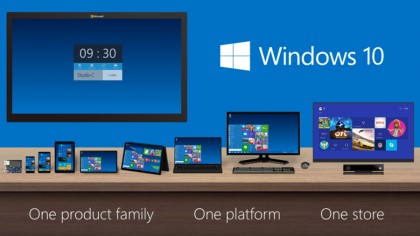
However, AMD CEO Lisa Su recently let slip during an earnings call that the OS is expected to launch at the "end of July." So, between Microsoft recently putting out a narrower launch window and one mighty slip of the tongue, it's extremely likely that the company will issue a date for the big release during the conference.
So, when exactly will the OS drop? Well, language like "the end of July" narrows things down to the fourth of fifth week of that month. And, since Microsoft issues patches to Windows every Tuesday, it's likely that the Windows 10 upgrade will appear either July 21 or 28. That is, if Su's slip up turns out to be true – we'll find out soon enough.
Sadly, we whiffed hard on this one. It looks like Microsoft has something even more special in store for this little nugget of info.
Rumor: Surface Pro 4 will be shown at Build
Take it with some salt (though appreciate the logic in it), but Digitimes has reported that Microsoft plans to unveil its Surface Pro 4 during Build 2015, citing sources close to the matter. While the publication's track record isn't stellar with these leaks, this move would make complete sense.
Microsoft needs not only to show us what's so great about Windows 10, but how exactly those things are so great. It needs a model for what the new Windows experience looks and feels like.
Are you a pro? Subscribe to our newsletter
Sign up to the TechRadar Pro newsletter to get all the top news, opinion, features and guidance your business needs to succeed!
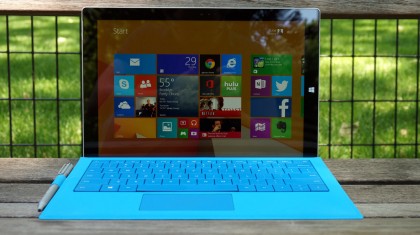
The timing couldn't be better, being days shy of a year since the Surface Pro 3 release. And there's little doubt that Microsoft Corporate VP of Surface Panos Panay and his team sat on their laurels for long after launching that gem. Not when they were so, so close to the perfect hybrid device.
So, how will Surface Pro 4 combat the MacBook and iPad this time? Based on a report by cnBeta, the 2-in-1 laptop is expected to come in 12- and 14-inch varieties and will likely run on Intel's fanless wonder, the Core M processor. (Meanwhile, International Business Times reports citing anonymous sources that it will still run on Intel's Core i5 or i7 chips.)
A recent report by Chinese outlet 36KR also pointed to the new Surface Pro 4's chip of choice, though only that it will be an Intel Broadwell processor, the latest from the firm. However, "Broadwell" could mean a lot of things: Intel's new fanless Core M line, its tablet-aimed Atom series and its laptop-grade Core i range have all been updated to the new Broadwell architecture.
At the very least, it's safe to assume that Atom is off the table – if it wasn't up to the task of powering last year's Surface Pro, then it likely isn't this time around, either.
We also know that, whatever design evolution the Pro 4 shows off, last year's Pro 3 accessories will be compatible, according to Microsoft. So, at the very least don't be surprised if the dimensions of Redmond's next Pro slate don't differ too terribly.
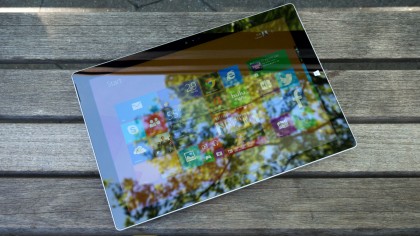
Rounding out the Pro 4's potential spec sheet, according to the same report, the device will run on a 2,160 x 1,440-pixel display, up to 1TB of storage and as much as 16GB of RAM. Also, remember that Microsoft is thought to be working on purchasing N-trig, the Israeli company that helped develop the Surface Pro 3 pen, so expect even deeper integration there.
Another miss here – looks like Microsoft has bigger plans in store for pulling the curtain back on this bad boy. Onward, to May!
Prediction: We'll see a flagship Windows 10 phone
Frankly, Microsoft itself has promised that Windows 10 for phones will, too, have its very own marquee device. What's likely to be the biggest stage of the year for the new OS seems like the most likely place to unveil such a handset.
Plus, now that we've already seen leaks of a flagship phone, from Chinese vendor Elephone, that allegedly can switch between Windows 10 and Android, surely the bigger players are even farther along. Of course, this assumes that Microsoft has attracted major handset makers to its new platform, which is a safe assumption.
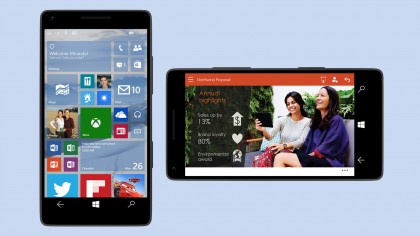
However, since we have next to no idea where this first flagship Windows 10 phone will come from, it's tough to say whether a Build 2015 reveal is in the cards for sure. If the first device is to come from anywhere other than Microsoft through its Lumia line, then they might want their own stage to unveil the device.
Yet another big fat miss here. In fact, Microsoft barely discussed phones outside of iOS and Android code support and Continuum features. Man, May better be awesome.
Prediction: Project Spartan will be named in a deeper preview
The codename for Microsoft's new web browser is cute, but it needs to go. Even if the company were to name the browser simply "Spartan", which would certainly be fitting given the app's minimalist trappings, that would suffice.
Not to mention a name like that would fit with Microsoft's Halo-inspired name for its Windows 10 voice assistant, Cortana. But anyway, what's more important is that we see more of the Internet Explorer replacement. How do extensions work exactly in Project Spartan, and what about stuff like video, Flash, HTML5 and other features?

Sure, you can see how some of those features look and feel, if you're in the "fast ring" of the Windows 10 Technical Preview. But we need a refined look at how it all comes together now that Microsoft has had another few months to iron out the kinks.
It's safe to expect Microsoft to give us a longer look at Project Spartan during the show – its teams have clearly spent a lot of time and effort on it. Perhaps we'll more closely see how the browser might interact between devices when it comes to sharing and saving content.
This is one we got right. Project Spartan is now known as Microsoft Edge, and it was given an even deeper look during the first Build 2015 keynote address.
Prediction: We'll see HoloLens in even more scenarios
This too might be a safe one, but surely what we saw of HoloLens back at Redmond in January was only the tip of the holographic iceberg. Much of the HoloLens API (or application programming interface) has already been in developers' hands since that fateful event, according to chatter on the company's Channel 9 developer forums.
So, if independent developers have already dug into much of the codebase working behind the device, it's not a leap to think that larger app companies are well in the know if not working with Microsoft directly. Given that it's keen to put its app on every screen it can, one likely company would be Facebook – we spend all day there, so why not just strap it to our faces?
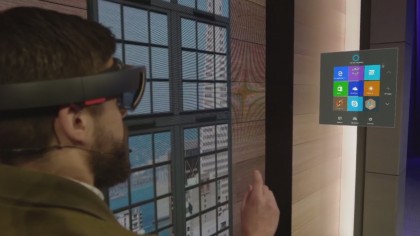
Plus, since Microsoft has previously said that HoloLens will be ready for the launch of Windows 10, we might even get a release date or launch window out of the company. But, judging by the prototype shown to the press during Microsoft's January event – it definitely wasn't what we all gawked at on stage – it'd be a shock to see this device release day and date beside the new OS.
We knew this prediction was a safe one, so it wasn't a huge surprise to see it confirmed. However, none of us could have predicted exactly where Microsoft was going with the HoloLens system. Spoiler: HoloLens will be everywhere.
Joe Osborne is the Senior Technology Editor at Insider Inc. His role is to leads the technology coverage team for the Business Insider Shopping team, facilitating expert reviews, comprehensive buying guides, snap deals news and more. Previously, Joe was TechRadar's US computing editor, leading reviews of everything from gaming PCs to internal components and accessories. In his spare time, Joe is a renowned Dungeons and Dragons dungeon master – and arguably the nicest man in tech.
